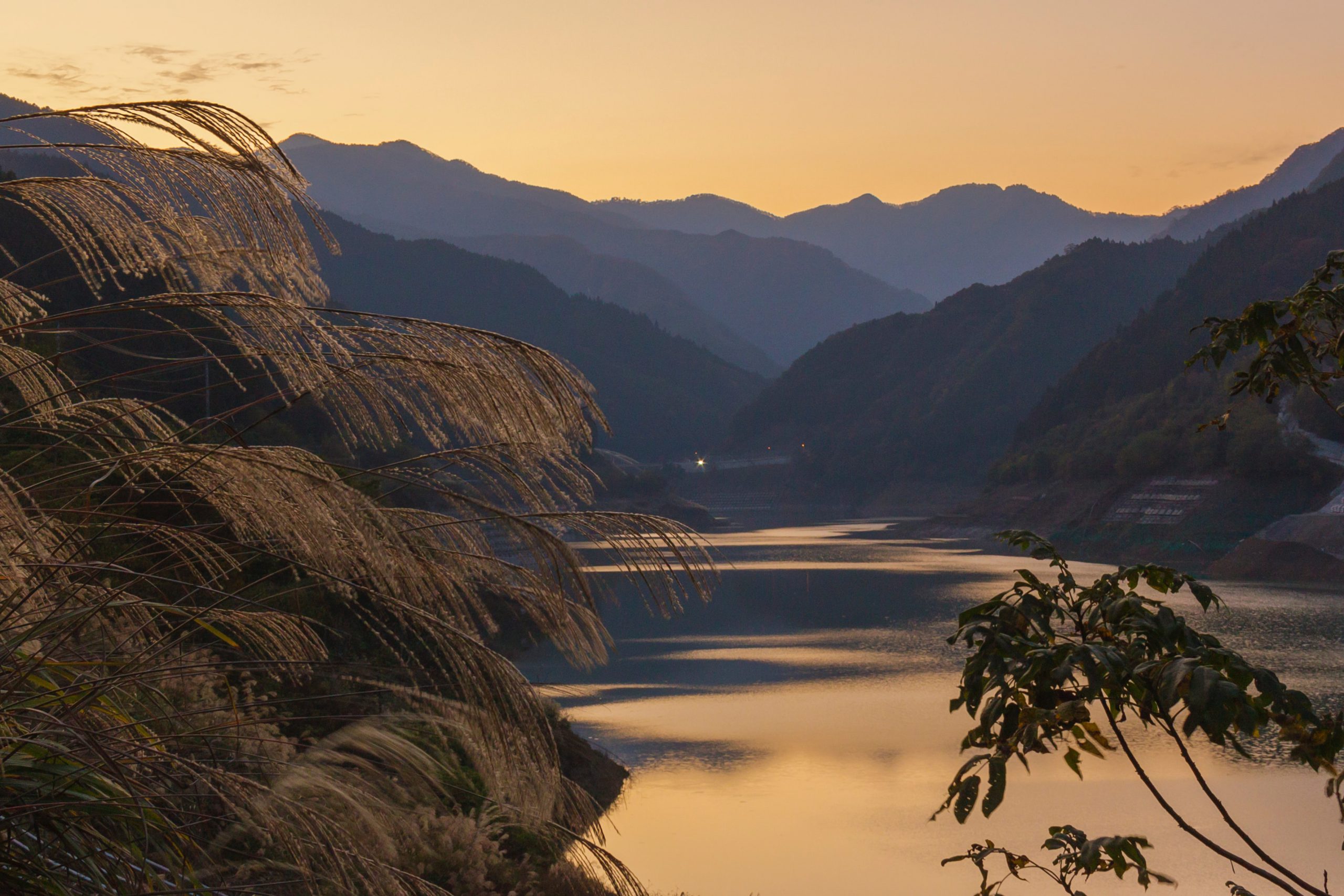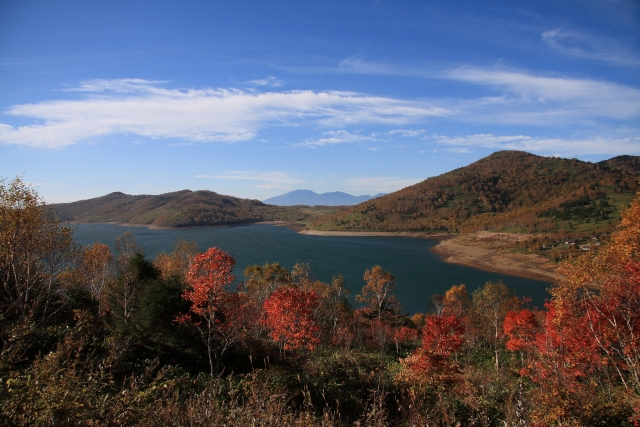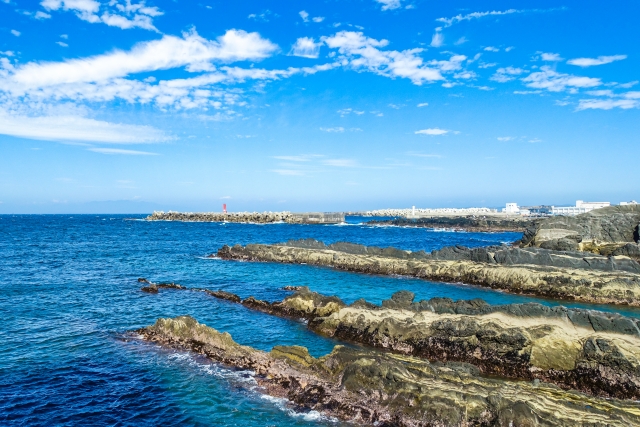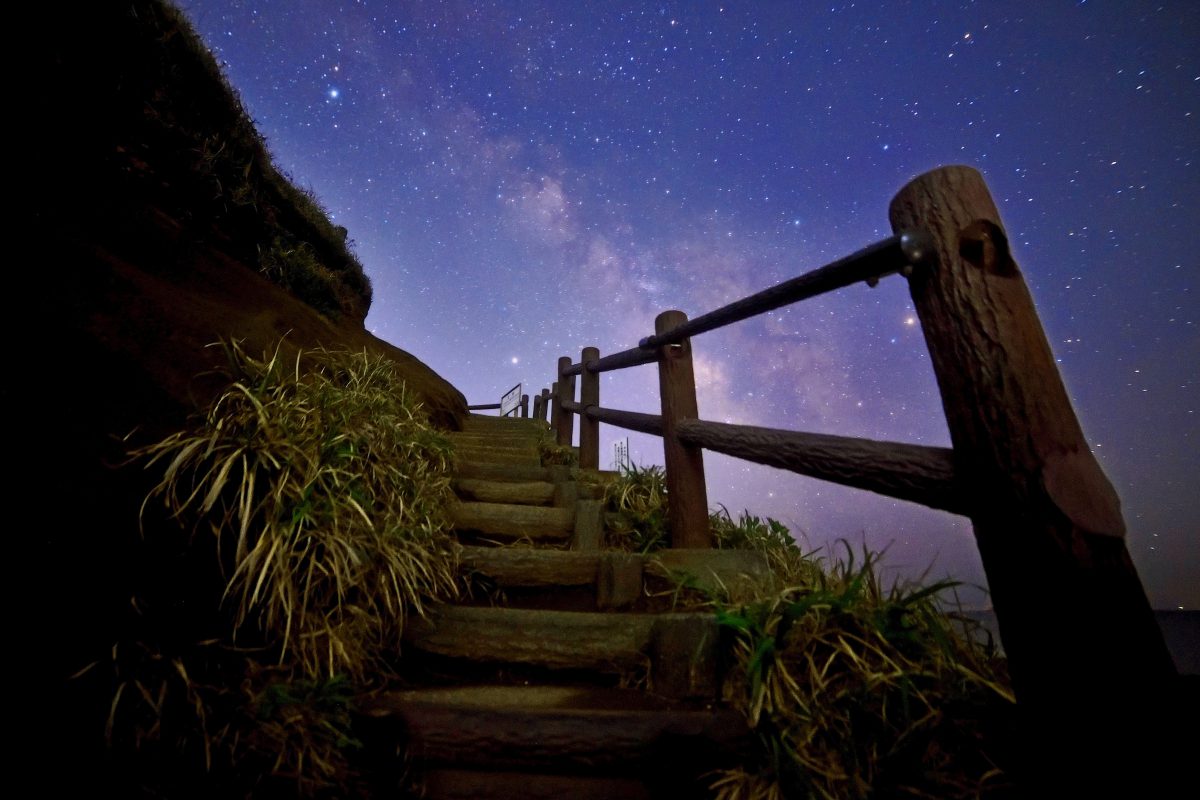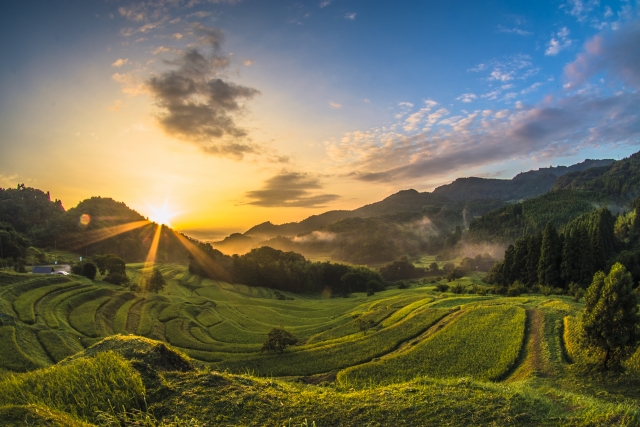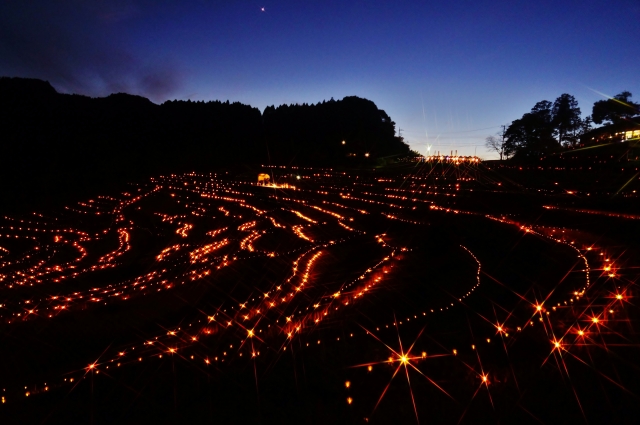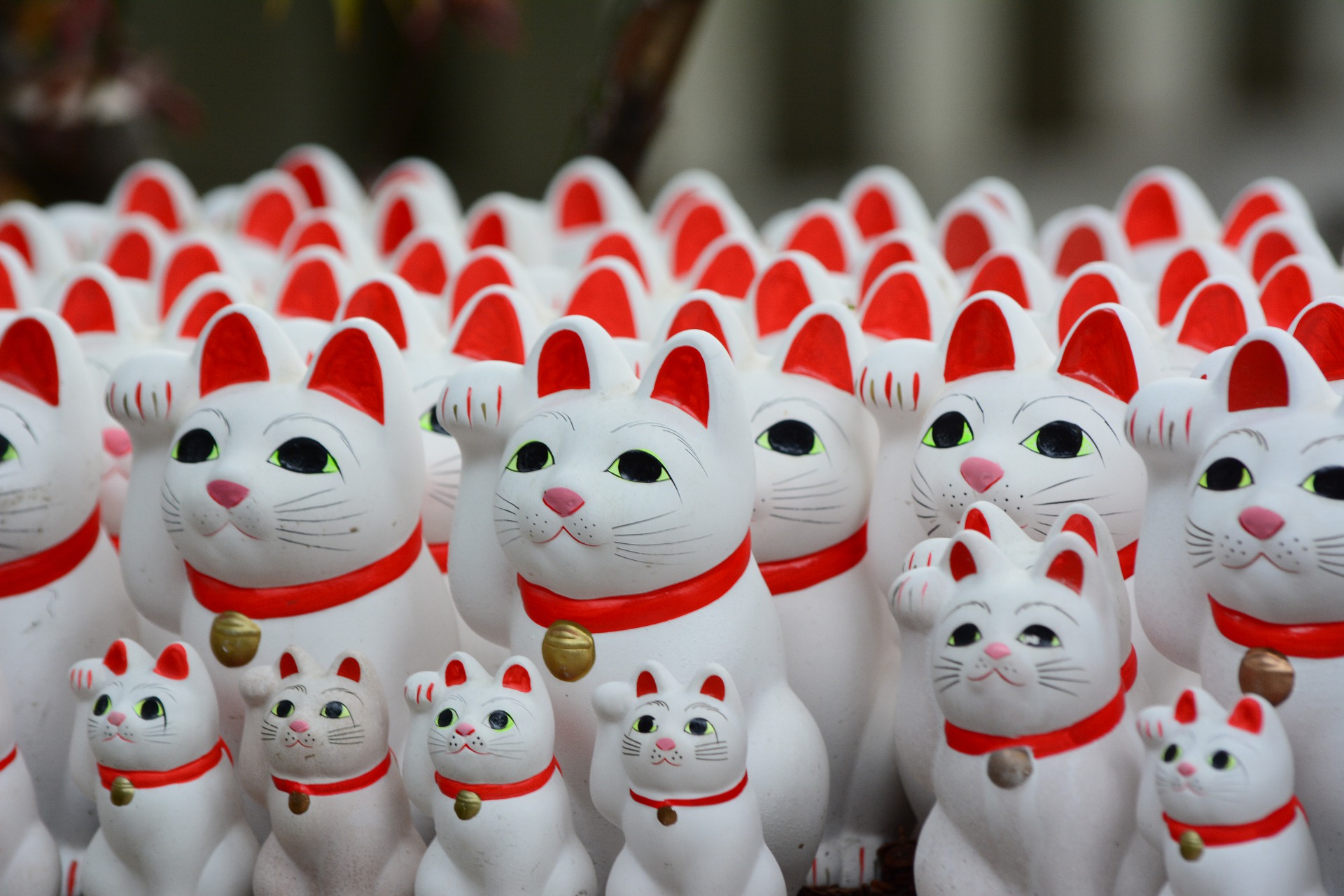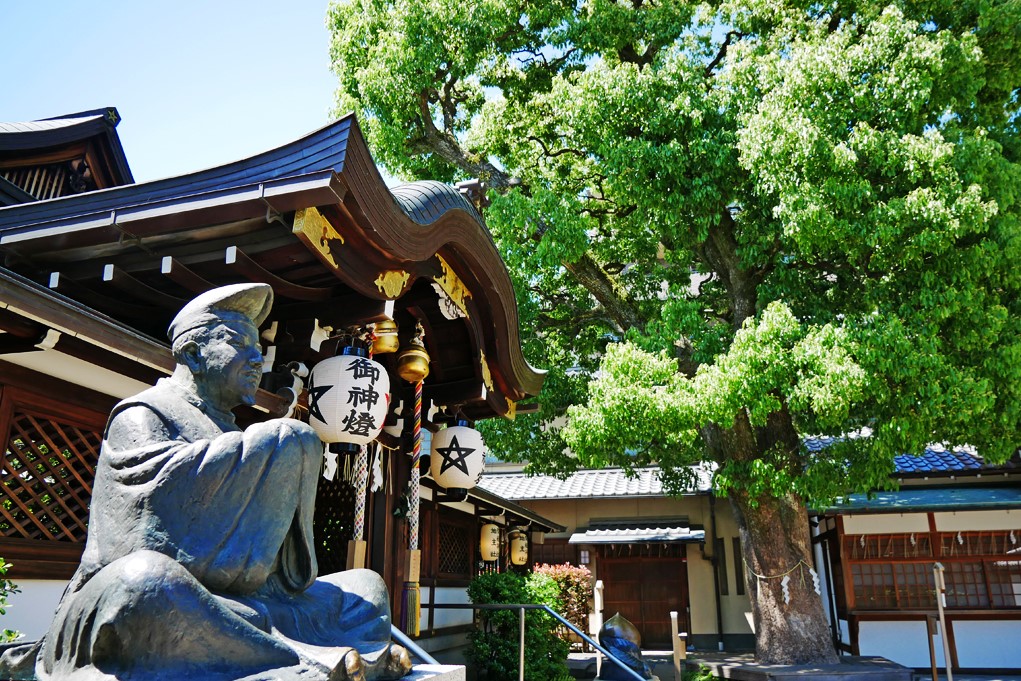Tokyo is (one of) the biggest and most developed cities in the world. It welcomes tourists with a wide range of tourist attractions and exciting spots that can be found in urban areas full of skyscrapers. At the same time it also boasts incredible nature spots within close range, perfect to refresh and recharge, away from large crowds of people and busy streets. Visiting these natural beauties will allow you to spend relaxing time while getting memorable experiences which are totally different from what you can find in Tokyo. Here is a useful list of nature spots near Tokyo that you probably have not yet heard off!
Are you looking for the best hiking trails near Tokyo? Read our blog about hiking near Tokyo!
1. Mt. Chausu (茶臼岳)
Mt. Chausu is a volcanic mountain situated in the middle part of Nasu Mountain Range in Tochigi Prefecture. The 1,915 meters tall mountain attracts many visitors being a popular hiking spot for both beginners and experienced hikers. You can enjoy a relaxing hike with your family while surrounded by incredible sceneries created by nature all year round. Take a cable car that conveniently takes you to the eighth station, from there it takes about 40 – 50 min to reach the top of the mountain which offers a panoramic view with white smoke continuously coming from the active volcano!
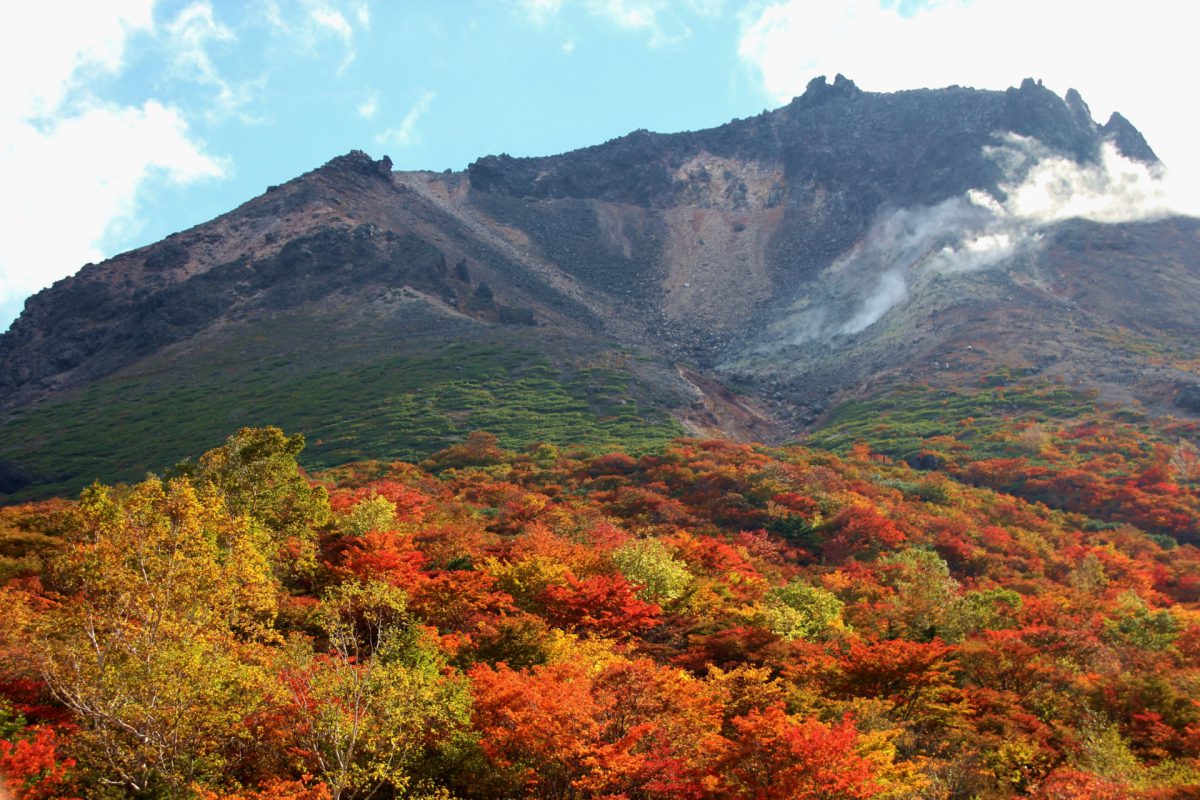
How to get to Mount Chausu from Tokyo
From Shinjuku Station, take the JR Saikyo Line to Omiya Station. Transfer to JR Tohoku Shinkansen and get off at Nasushiobara Station. Bus service is available there to take you to Mt. Chausu.
Travel time ~4 hrs.
Travel costs ~¥7,000
2. Lake Nozori (野反湖)
Lake Nozori is a scenic spot that is located near the prefectural border between Gunma and Nagano Prefecture. It is a part of Joshinetsu Kogen National Park (上信越高原国立公園), which covers about 180,000 hectares, making it the second largest national park in Japan. The beautiful lake sits on a plateau situated about 1,500m above sea level. It is a man-made lake, which was originally created to store water for Nozori Dam, completed in 1956.
The area is home to a range of alpine plants that fascinate visitors from spring to autumn. It is estimated that there are about 300 kinds of plants and flowers that can be spotted around the hiking courses around the lake. The best time to visit is from April to November and many people make their way to the lake to enjoy a refreshing stroll or hiking during summer season. Camping is another option for those who want to enjoy watching the stunning starry sky at night. From the mid-October, autumn leaves start to change the colors of surrounding mountains into red and yellow, which offers a stunning scenery!
How to get to Lake Nozori from Tokyo
Take the JR Joetsu Shinkansen to Takasaki Station. Transfer to JR Agatsuma Line and get off at Naganohara-Kusatsuguchi Station. From May to the middle of October there is a bus service available to Lake Nozori.
Travel time ~4 hrs.
Travel costs ~¥7,000
3. Fukuroda Falls (袋田の滝)
Fukuroda Falls is a beautiful fall located in Ibaraki Prefecture. It is occasionally referred to as the three greatest falls in Japan along with Kegon Falls (華厳の滝) and Nachi Falls (那智の滝). It stands 120m with the width of 73m, and the water flows over the surface of four levels of giant rocks.
It fascinates visitors with different scenery created by plenty of nature around depending on each season. Enjoy the contrast of lush greenery and splashing waterfalls in spring, while it is a perfect spot to cool off your body during summer season. You can visit there in fall to take stunning pictures of beautiful autumn leaves. If you are lucky enough, you will be able to see the frozen water falls on a chilly winter day!
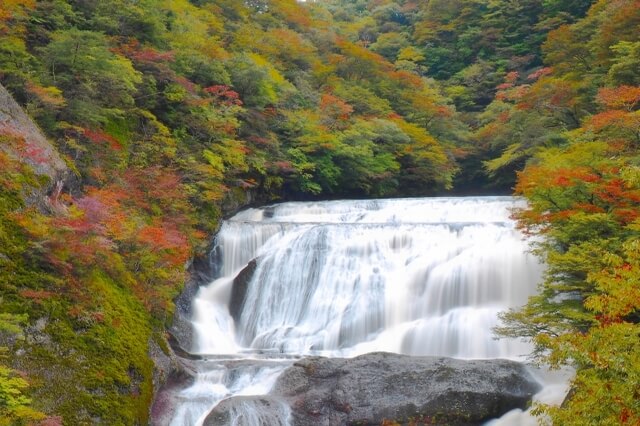
How to get to Fukuroda Falls from Tokyo
Take the JR Hitachi-Tokiwa Line until you get to Mito Station. Transfer to the JR Suigun Line and get off at Fukuroda Station. From the station, take a bus or taxi to the falls (around 10 min).
Travel time ~3 hrs.
Travel costs ~¥5,000
4. Jogashima Park (城ヶ島公園)
Jogashima Park is a public park located on the edge of Boso Peninsula in Chiba Prefecture. It covers almost half of Jogasaki island which is connected to the main island of Japan by bridge. It boasts a wide range of plants and seasonal flowers that create the fantastic scenery. It takes about 30 min to explore the entire park along pathways taking you to scenic spots such as the beautiful coastline and large lawn areas. When the weather permits, you can see Mt. Fuji over the sea from observation spots or the amazing star sky at night!
How to get to Jogashima Park from Tokyo
From JR Shinagawa Station, take the Keikyu Line to Misakiguchi Station. Take the Keikyu Bus bound for Hakushu-mae.
Travel time ~2 hrs.
Travel costs ~¥1,300
5. Ashikaga Flower Park (あしかがフラワーパーク)
Ashikaga Flower Park is a popular tourist attraction in Tochigi Prefecture and one of the most beautiful flower parks in Japan. It attracts 1.5 million visitors every year with the display of beautiful flowers and winter illumination events that have been chosen among the best illuminations in Japan for the past 5 years. They divide a year into 8 periods, and welcome visitors with flowers planted based on different themes in each period. Spring is a time for tulips and cherry blossoms, stunning wisteria flowers from April, followed by colorful roses in May. The rainy season, starting from mid-June, allows hydrangeas to bloom, before hot summer finally comes with water lilies gracefully floating on the water. The famous Illumination event starts from the late October, when countless numbers of lights brightly lighting up the entire park until the beginning of February.
*The entrance fee of the park depends on the season, ranging from ¥300 – ¥1,900.
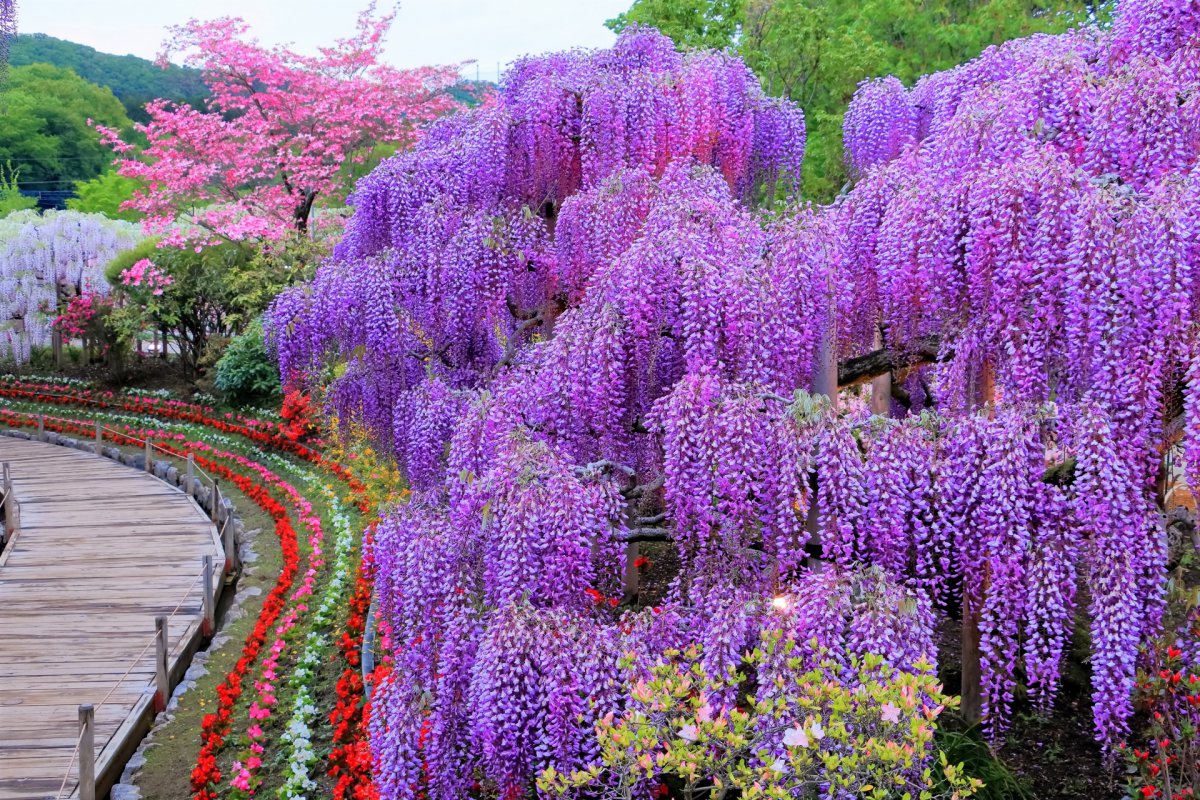
How to get Ashikaga Flower Park from Tokyo
Take the JR Shonan-Shinjuku to Oyama Station. Transfer to JR Ryomo Line and get off at Ashikaga Flower Park Station.
Travel time ~2 hrs.
Travel costs ~¥2,000
6. Hitachi Seaside Park (ひたち海浜公園)
Hitachi Seaside Park is another flower park situated in Ibaraki Prefecture. The 215ha-park consists of 7 areas which feature different kinds of seasonal flowers and outdoor activities. During spring season, the Miharashi no Oka area (みはらしの丘エリア) is completely covered with thousands of nemophila flowers resembling an incredible blue carpet in spring, while the vivid red colors of the cosmos and red kokia are beautiful in autumn. The hill covered in seasonal flowers is one of the best photo spots in Japan! Children can play at an amusement park called Pleasure Garden which features a range of exciting rides and attractions. You can also rent a bicycle to cover the park grounds along the cycle path while feeling the sea breeze.
Entrance to the park is ¥750 per person.
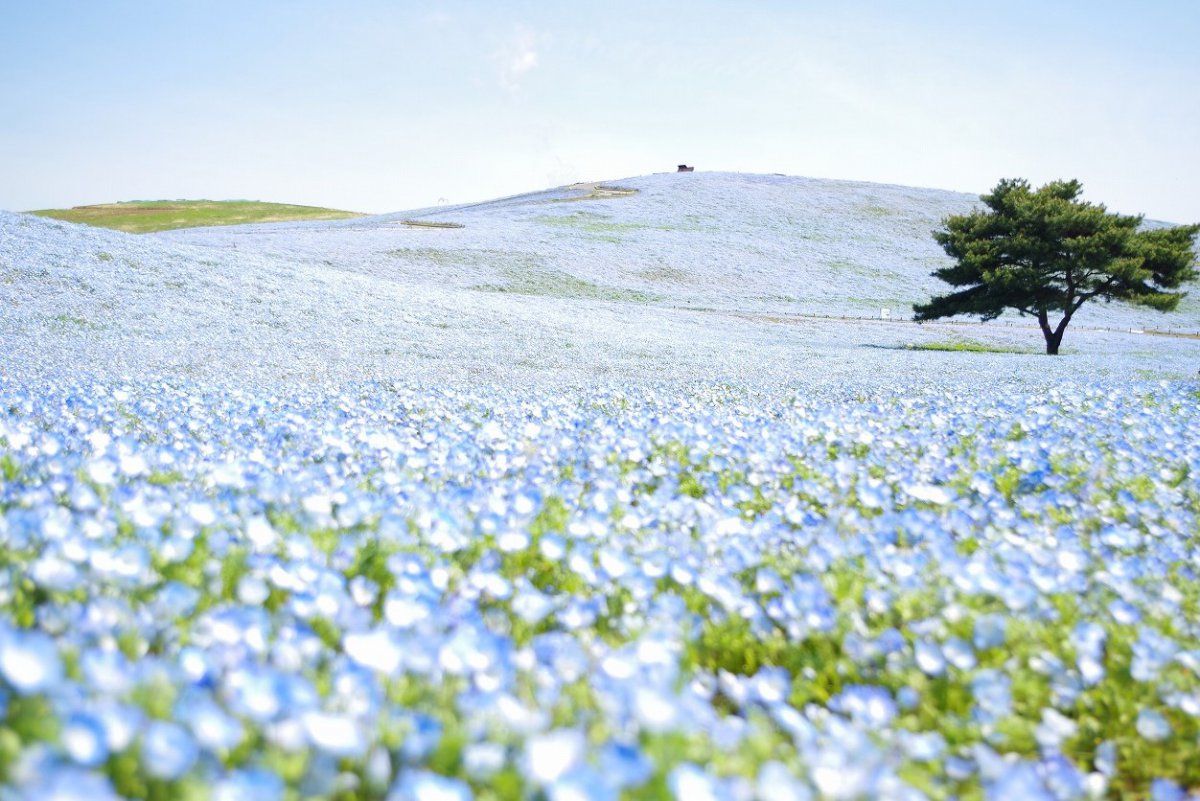
How to get to Hitachi Seaside Park from Tokyo
Take the JR Hitachi-Tokiwa train to Katsuta Station. Take the Ibaraki Kotsu Bus bound for Kaihin-koen Nishiguchi.
Travel time ~2 hrs.
Travel costs ~¥4,250
7. Hitsujiyama Park (羊山公園)
Hitsujiyama Park is a stunning flower park located in the east part of Chichibu city, Saitama prefecture. It is widely known for Shiba-zakura no Oka(芝桜の丘), the beautiful hillside which turns pink because of the colorful moss phlox from the mid-April through early May. The moss has different shades of pink/purple, all carefully planted in order to create an amazing scenery. It looks like colorful waves creeping on the hillside. Mt. Buko (武甲山) is a mountain near the south of the park, where you have different hiking options. The 1,304m tall mountain can be seen from the hillside, and you can take stunning pictures of it along with the beautiful flowers in spring.
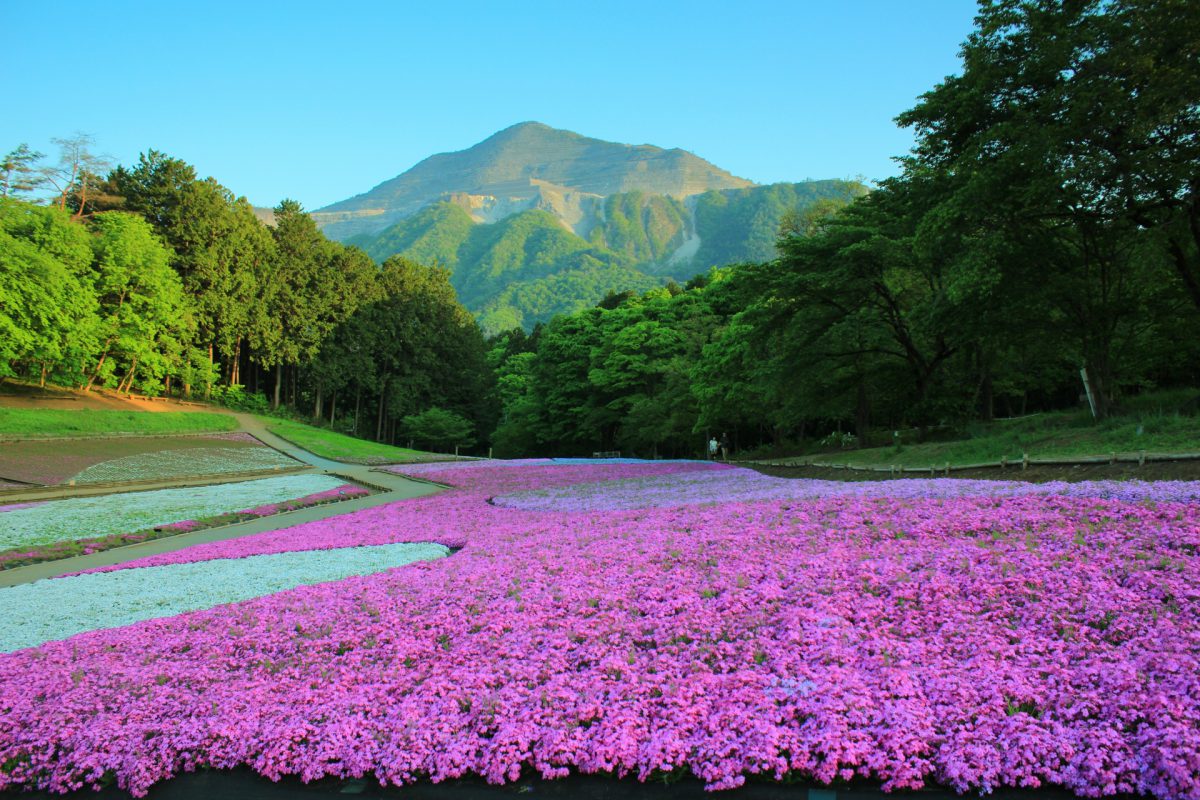
How to get to Hitsujiyama Park from Tokyo
From Ikebukuro Station, take the Ikebukuro Line Express to Seibu-Chichibu Station. It is a 15 min walk to reach Hitsujiyama Park.
Travel time ~2 hrs.
Travel costs ~¥1,500
8. Nagatoro (長瀞エリア)
Nagatoro area refers to a pleasant tourist destination in Saitama Prefecture. It can be easily combined with a visit to Hitsujiyama Park, located a 30min drive or train ride from the park. Nagatoro attracts about 3 million visitors in a year with a number of tourist attractions such as historical sites, scenic spots, and outdoor activities enjoyable for everyone. Rafting along the Arakawa River is one of the highlights that you shouldn’t miss. If you prefer a more peaceful experience, Japanese-style boat tours are also available. The river cruise takes you along the rocky valley in a wooden boat with a local guide. Visit the iconic mountain Mt. Hodo and hike to the summit from where you have a beautiful panoramic view, you can also take the cable car up. Nagatoro is also home to Hodosan Shrine, home to magnificent structures and incredible buildings standing there for over a century.

How to get to Nagatoro from Tokyo
From Shinjuku Station, take the JR Shonan-Shinjuku Line to Kumagaya Station. Transfer to Chichibu Railway and get off at Nagatoro Station.
Travel time ~2 hrs.
Travel costs ~¥2,000
9. Oyama Senmaida Rice Terrace (大山千枚田)
Oyama Senmaida Rice Terrace is located in Kamogawa city in Chiba Prefecture. It is one of the few beautiful rice fields in Japan that is not located in the far remote areas or countryside. The rice fields draw numerous visitors as the closest rice terrace from Tokyo because of the convenient location. If you visit the terraces in spring, you will be able to see traditional rice planting done by local farmers. Autumn is the rice harvesting season when the entire rice field turns gold with beautiful rice plants. From the mid-October to the early January, an annual illumination event is held which lights up the rice field with beautiful lights.
How to get to Oyama Senmaida Rice Terrace from Tokyo
From Shinjuku Station, take the JR Wakashio train to Awa-Kamogawa Station. Take the bus from to Oyama Senmaida Rice Terrace.
Travel time ~3 hrs.
Travel costs ~¥2,400
10. Oarai Isosaki Shrine (大洗磯前神社)
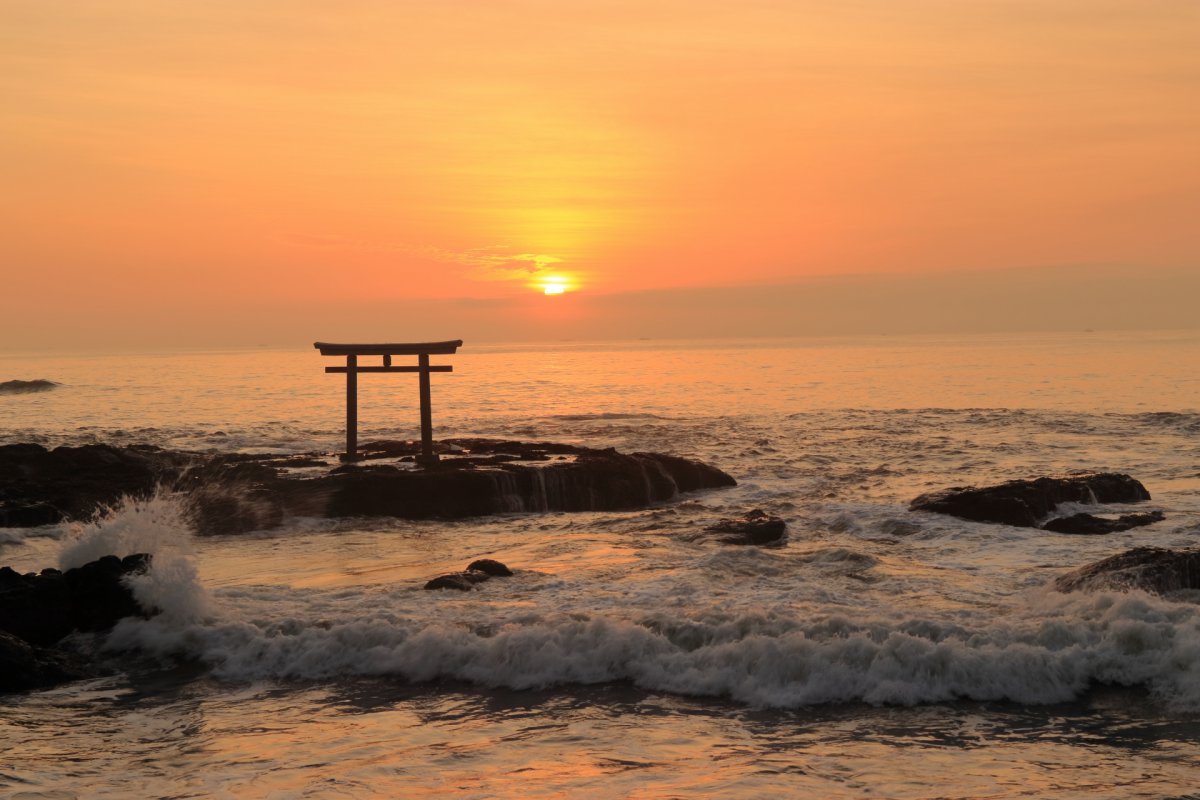
This beautiful picture was taken at Oarai Isosaki Shrine, a sacred shrine located in Oarai in Ibaraki Prefecture. It is widely known for the photogenic torii gate which looks like it is standing in the sea. The original shrine dates back to 856, and the current structure was reconstructed in the 18th century after being destroyed by civil wars. Officially designated as a prefectural cultural property, it has been visited and loved by many people who believe in its spiritual power. On New Year’s Day, many people flock there to catch the first sunrise of the year, hatsuhinode, wishing for good fortune and happiness of the year!
How to get to Oarai Isosaki Shrine from Tokyo
Take the JR Hitachi-Tokiwa train to Mito Station and change to a local bus that takes you to Oaraijinjamae.
Travel time ~2,5 hrs.
Travel costs ~¥4,500
Japan Wonder Travel Tours
Japan Wonder Travel offers a wide range of tours, both private and groups tours, throughout Japan. We can customize the itinerary based on your request or you can join one of our standardized tours. In all cases, a local guide will happily show you the best places and tell you the best places to go in Japan, best things to try in Japan and best experiences to have! Some of our most popular tours include:
- Tokyo 1 day Highlights Tour
Join our private walking tour to explore the highlights in Tokyo! - Food & Drink tour @Tsukiji
Don’t miss the chance to try tasty local food and refreshing drinks at a lively fish market Tsukiji!
Tokyo is an amazing city that has a lot to offer, but every once in a while you want visit the nature and recharge yourself. If you think you need time to relax and get away from the hustle and bustle of the Tokyo city life, go on a day trip or weekend trip to somewhere close to nature! It will help you refresh and create some fun memories while surrounded by incredible nature and wildlife. The majestic landscapes are waiting for you with adventurous activities as well as breathtaking sceneries! All of these places are accessible using public transportation, but the easiest way of getting there would be by (rental) car. In that way you can also visit some of the other great places nearby.
Follow us on Instagram or Facebook for more travel inspiration. Or tag us to get featured!
Happy travelling!
Other articles you may like
This post contains some affiliate links. When you click through and make a purchase we may receive some commission, at no extra costs to you.
